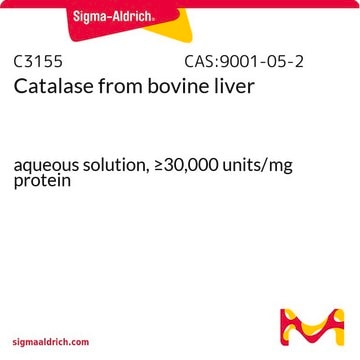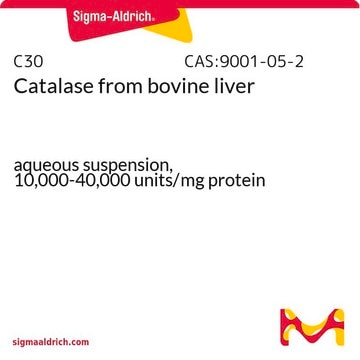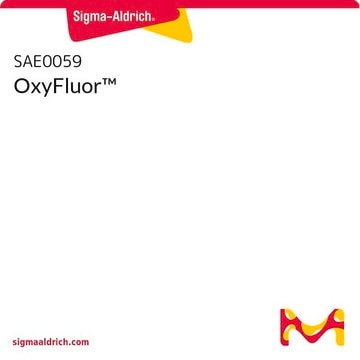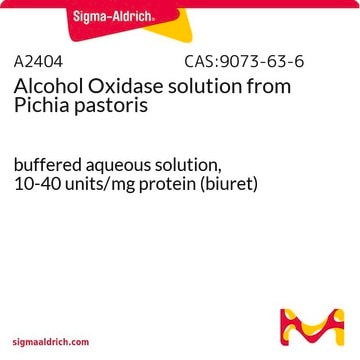Prepare stock solutions in 0.1 M Tris-HCl, pH 7.0. While no specific concentration was provided, calculations based on the assay procedure suggest that stock solutions should be in the range of 0.5 - 1.0 mg/ml protein. This aligns with the general recommendation for proteins of a minimum of 1 mg protein/ml. The stock solution can be stored as aliquots at -20°C and should be reasonably stable for several months.
P4234
Pyranose Oxidase from Coriolus sp.
recombinant, expressed in E. coli, ≥2.7 units/mg solid
Synonym(s):
Pyranose: Oxygen 2-Oxidoreductase
Select a Size
Select a Size
About This Item
Recommended Products
recombinant
expressed in E. coli
form
powder
specific activity
≥2.7 units/mg solid
shipped in
wet ice
storage temp.
−20°C
General description
Application
Biochem/physiol Actions
Unit Definition
Other Notes
Signal Word
Danger
Hazard Statements
Precautionary Statements
Hazard Classifications
Resp. Sens. 1
Storage Class Code
11 - Combustible Solids
WGK
WGK 1
Flash Point(F)
Not applicable
Flash Point(C)
Not applicable
Choose from one of the most recent versions:
Certificates of Analysis (COA)
Don't see the Right Version?
If you require a particular version, you can look up a specific certificate by the Lot or Batch number.
Already Own This Product?
Find documentation for the products that you have recently purchased in the Document Library.
Customers Also Viewed
-
What is the solution stability for product P4234 after dilution?
1 answer-
Helpful?
-
-
Do you have a protocol for the activity assay used to qualify pyranose oxidase?
Do you have a protocol for the activity assay used to qualify pyranose oxidase?
1 answer-
We do not have a pre-formulated protocol available at the moment. However, for reference, you may find the following publication informative. The publication, "Limited proteolysis of pyranose 2-oxidase results in a stable and active complex" in PeerJ Materials Science 2:e7 (https://doi.org/10.7717/peerj-matsci.7), served as the basis for this assay, utilizing the production of quinoneimine dye to directly reflect the turnover rate of pyranose oxidase.
Helpful?
-
Active Filters
Our team of scientists has experience in all areas of research including Life Science, Material Science, Chemical Synthesis, Chromatography, Analytical and many others.
Contact Technical Service












